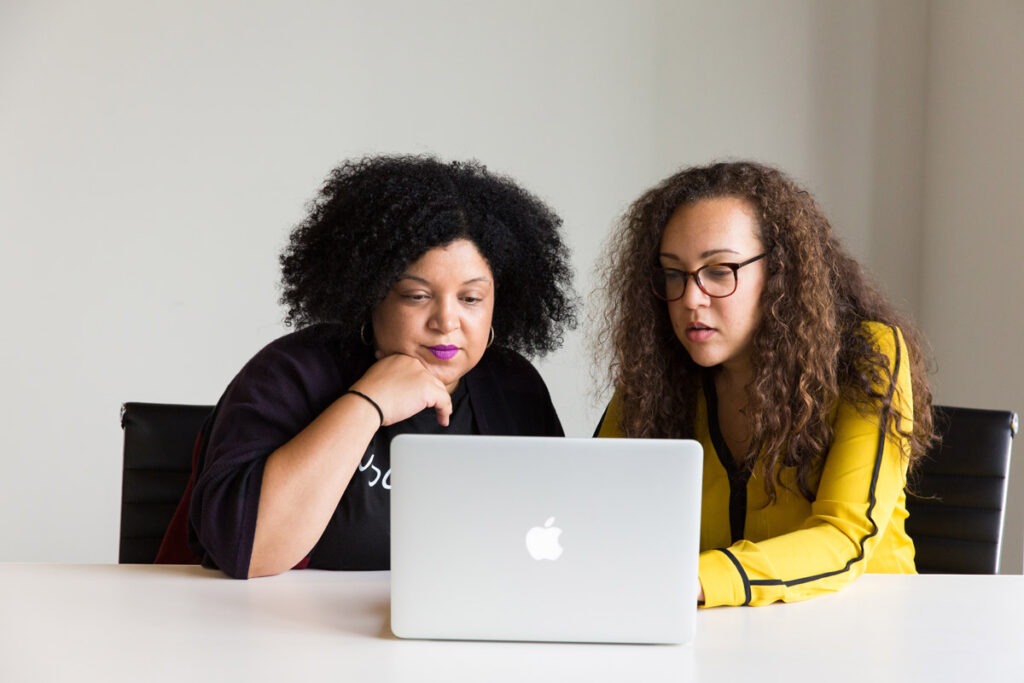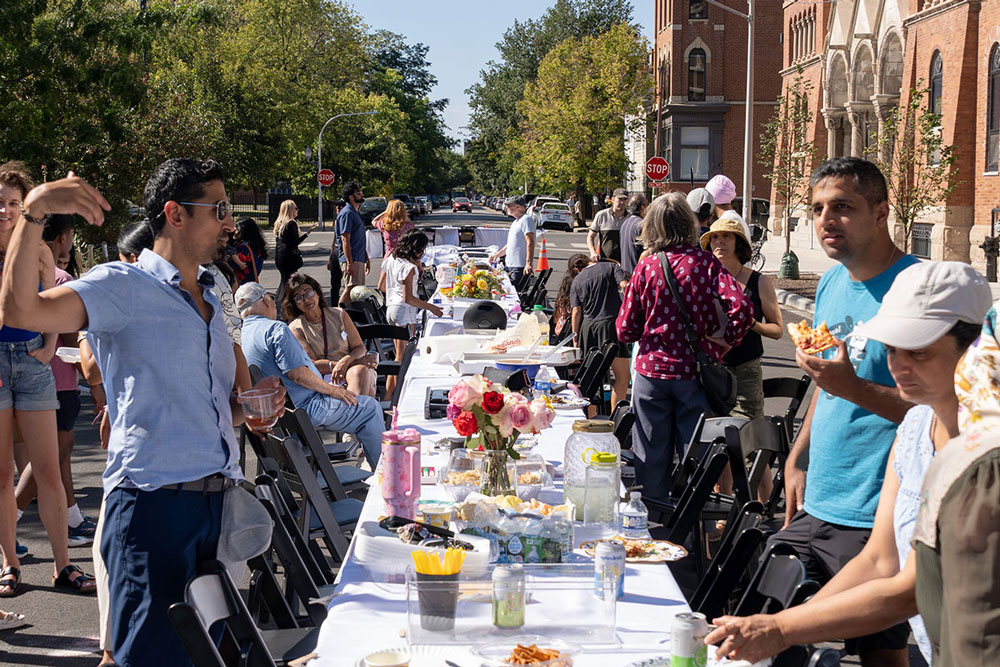
Too many leaders in the social sector seem hellbent on trying to prove wrong, insisting, despite an abundance of evidence to the contrary, that it is possible to dismantle the master’s house with the master’s tools.
Much has been written about, for example, how some foundations wield power in ways that perpetuate inequity, maintain the systems that cause the problems they’re trying to fix, and do not understand the communities they serve.
At the Black-founded and Black-centered consulting firm of which I’m the CEO, our mission is to help organizations interrogate and change these dynamics.
Naming the Contradictions
The consulting business model is awash with contradiction. A consultant is not always in full alignment with clients. A good consultant aims to be a critical friend. But ultimately, leaders and organizations can take a consultant’s advice—or leave it.
So, anyone worth their salt in this field must ask themselves questions like the following:
- How far can you push and still maintain your relationships?
- How can you practice accountability to your communities and deliver for your clients?
- What is the line between necessary compromise and compromising your integrity?
- How do you decide when to walk away from a contract?
None of these questions have easy answers.
Another example of the contradictions in our work: Central to the analysis that guides the work of our consultancy is a critique of capitalism—particularly how aspects such as paternalism, short-termism, exploitation, and dehumanization show up in and undermine social change efforts.
Are the tools we’re using ‘the master’s tools?’ Do we need to create new ones? I’m talking about capacity building.
It would be lovely to say that these realities are not in tension, but sometimes they are. For example, this summer, our firm moved to a four-day work week to enable employees to enjoy Liberation Fridays—time to rest, find joy, and nurture community. This meant not only shifting standing meetings, but even, in some cases, turning down new work.
What Does Capacity Building Mean?
Recently, the team at our firm has been asking: Are the tools we’re using “the master’s tools”? Do we need to create new ones? I’m talking about capacity building.
Increasingly, our firm has being hired by foundations to “build the capacity” of their grantees through cohort models—bringing leaders together to collectively grow skills and competencies that can increase sustainability and effectiveness. Many of the grantees in the cohorts we’ve managed serve BIPOC populations and/or are led by people of color.
Although racial justice is increasingly focused on capacity-building efforts, some of the nonprofits we’ve worked with feel that they’re being asked to embrace white standards, and to take actions based on what foundations want, rather than what will benefit their communities.
We relish the opportunity to work with these organizations. Many of them are leading the way on issues from ensuring equitable access to housing and healthcare, to ending mass incarceration and state violence, and advancing environmental justice.
Sign up for our free newsletters
Subscribe to NPQ's newsletters to have our top stories delivered directly to your inbox.
By signing up, you agree to our privacy policy and terms of use, and to receive messages from NPQ and our partners.
But we’ve also become more attuned to how the capacity building frame is often implemented in ways that lack reciprocity. Of course, all organizations have room to improve, and learning with and from others can be transformational. But who gets to decide what constitutes effectiveness? And who sets the measures of sustainability?
In some instances, cohort participants have told us that funders’ assessments of the skills and competencies nonprofits need to build are misinformed, or they are overly informed by funders’ own preferences. The language in outreach materials doesn’t always resonate, or worse, it lands in offensive ways. Although racial justice is increasingly focused on capacity-building efforts, some of the nonprofits we’ve worked with feel that they’re being asked to embrace white standards and to take actions based on what foundations want, rather than what will benefit their communities. Some grantees feel that foundation staff do not value their expertise or lived experiences. And there is also sometimes a sense that foundations need to turn the mirror on themselves.
For example, foundations often want to allocate a substantial part of a cohort’s time together to learning how to write better grants. “But shouldn’t foundations make their requirements less cumbersome and more equitable?” cohort participants argue.
Or, as part of their participation in a cohort, grantees are required to adopt prepackaged evaluation metrics. “But,” they ask, “why do foundations presume that they know what we should be measuring?”
There are obvious complaints embedded in these questions. Of course, pervasive racial biases and inequities exist in philanthropic culture and practice.
An organization’s small budget is often cited by foundations as a ‘capacity issue’—a reason to invite an organization to participate in a capacity-building cohort, or even to reject a grant proposal altogether. It’s a vicious cycle.
Organizations led by and serving people of color struggle to secure philanthropic funding. For example, a 2020 report by the Ms. Foundation for Women found that the median size of grants made by foundations to organizations by and for women and girls of color wa, not even sufficient to pay the salary of a single staff member. “Such small grants,” the report notes, “make it difficult to hire and pay staff sufficiently or adequately support the use of multiple strategies while working on multiple issues.”
At the same time, an organization’s small budget is often cited by foundations as a “capacity issue”—a reason to invite an organization to participate in a capacity-building cohort, or even to reject a grant proposal altogether. It’s a vicious cycle that has contributed to a crisis of conscience at our firm.
A Better Framework for Building Capacity
As an intermediary hired by foundations to help their grantees, what responsibility does our firm bear for philanthropy’s inequities and harmful practices? How can the field do better and what practices can our firm adopt toward that end?
Here are some practices we’ve committed to, which we believe can help foundations and other intermediaries to identify policies and behaviors that hinder their grantees’ important work, and change how they approach capacity building:
- Engage in a deep, long-term, and transparent process to reckon with organizational culture (or norms, habits, and underlying beliefs) and to advance intersectional equity and justice in everything the organization does.
- Continually ask grantees what they need today. Needs change and evolve as the world changes. If we have our finger on the pulse of what grantees/cohort participants need, we’ll be able to shift our own strategies and offerings to be better partners.
- Build authentic relationships with grantees so that they’ll tell us the truth about what they need. This requires assuming consultants like us do not have all the answers, asking for feedback, and receiving it humbly.
- Rethink how we define capacity. What about investments in healing practices? What about somatic work? What about creating space for joy and rest?
Will these practices go far enough? Perhaps not. Perhaps it is time to retire capacity-building as a framework and tool. We’re open to that possibility, even if it means losing an income stream.
We’re embracing our crisis of conscience as an opportunity for deeper listening and learning. As Audre Lorde articulated in a less cited but equally profound essay: “Through examining the combination of our triumphs and errors, we can examine the dangers of an incomplete vision. Not to condemn that vision but to alter it, construct templates for possible futures.”











